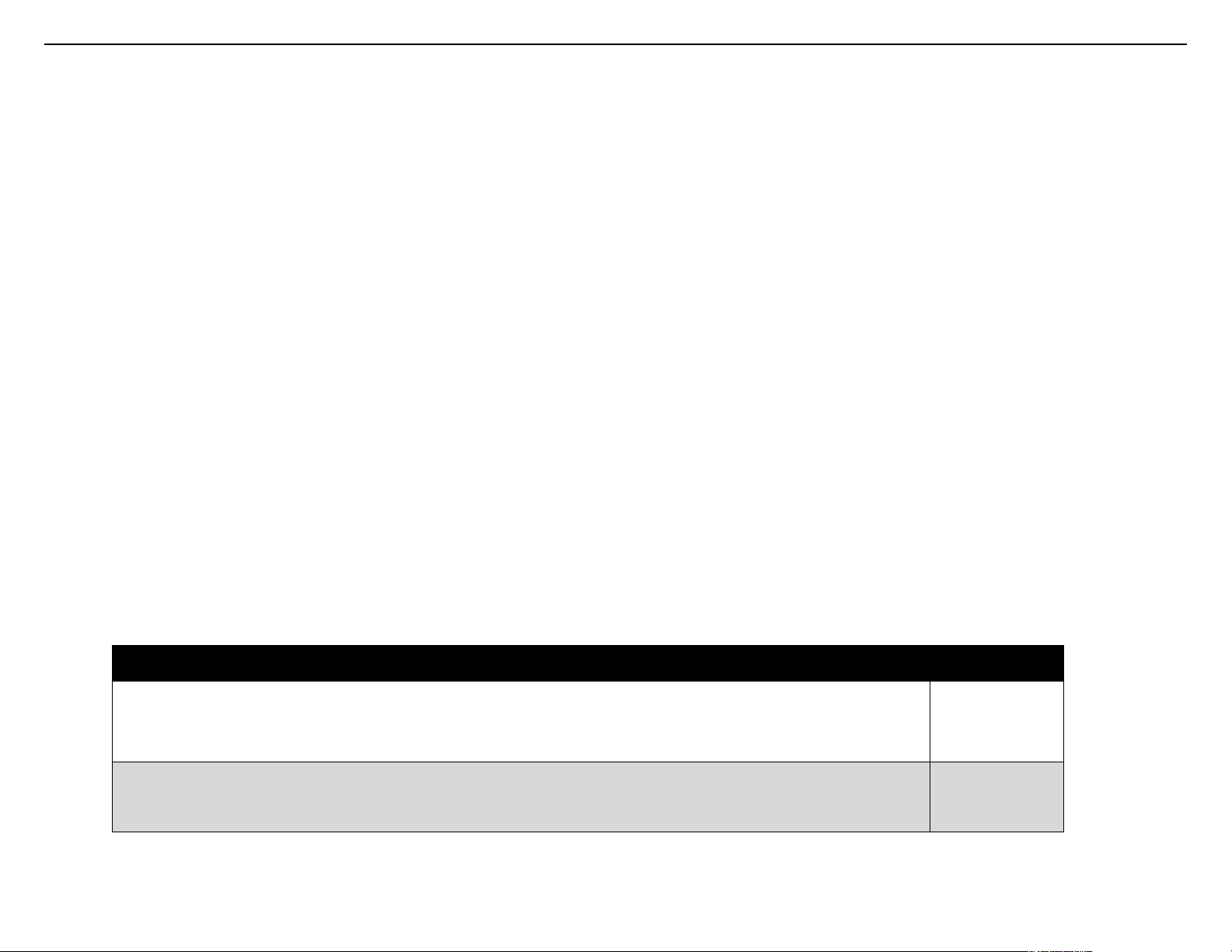
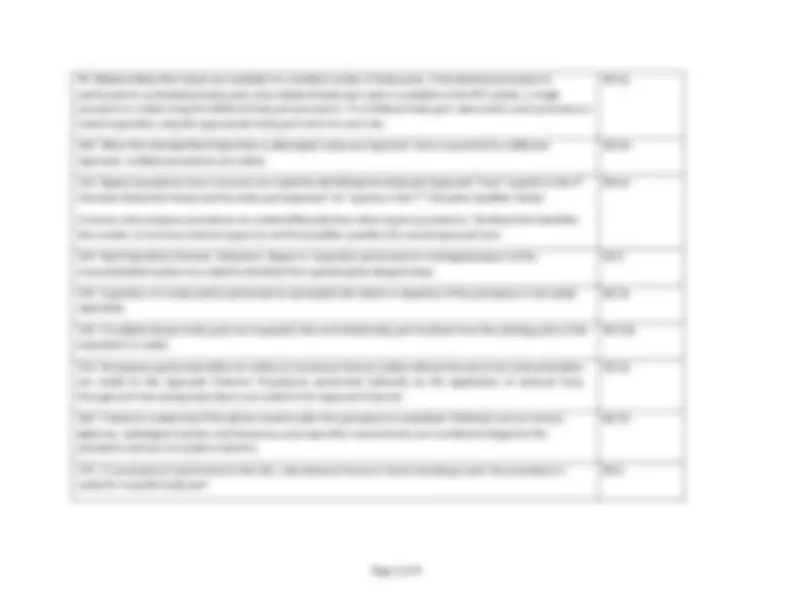
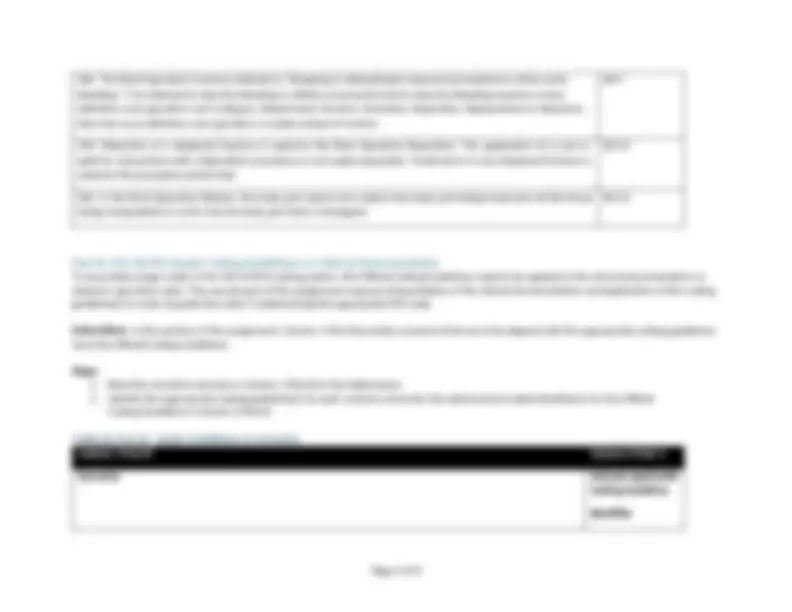
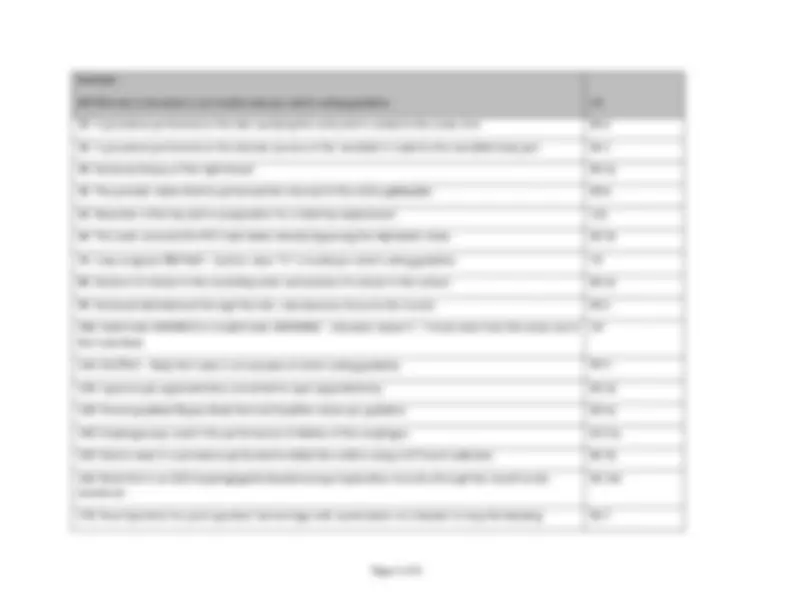
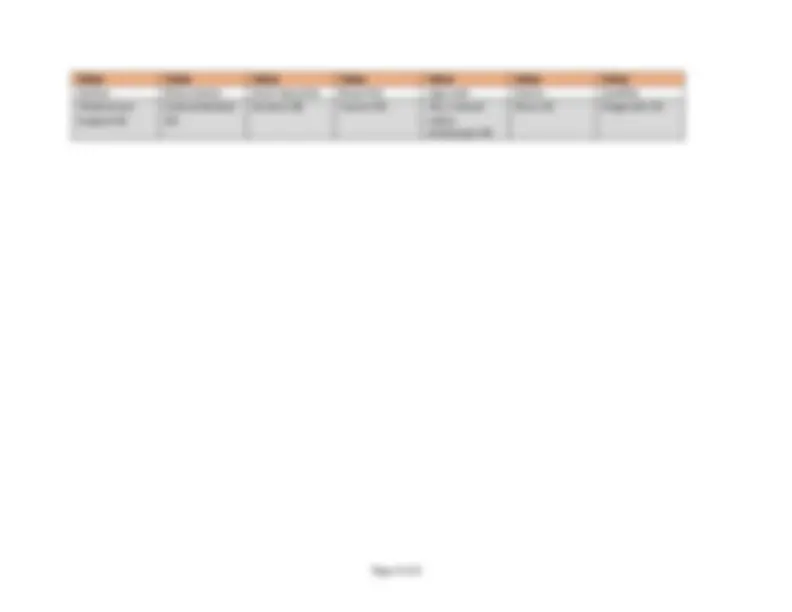


Study with the several resources on Docsity

Earn points by helping other students or get them with a premium plan


Prepare for your exams
Study with the several resources on Docsity

Earn points to download
Earn points by helping other students or get them with a premium plan
Community
Ask the community for help and clear up your study doubts
Discover the best universities in your country according to Docsity users
Free resources
Download our free guides on studying techniques, anxiety management strategies, and thesis advice from Docsity tutors
HIM1257 Module 04 Assignment - ICD-10-PCS Coding Principles and Code Build Process
Typology: Assignments
1 / 8

This page cannot be seen from the preview
Don't miss anything!





Overview: There are 3 parts to this assignment. Each part of the assignment addresses a specific aspect of ICD-10-PCS coding. To code accurately using the ICS-10-PCS system requires the ability to understand and apply the coding principles to clinical documentation by following the designated code build process.
The ICD-10-PCS system includes specific conventions and coding guidelines or “rules” which provide instruction on how to accurately construct the codes. This portion of the assignment will provide an opportunity to become more familiar with the guidelines to be used in the determination of the appropriate PCS code. Instructions: Utilize the ICD-10-PCS Official Coding Guidelines presented in the front of the ICD-10-PCS Code Book to match the narrative in the assignment for Part A. Steps: For each coding guideline narrative,
Column 1-Part A Column 2-Part A ICD-10-PCS Coding Guidelines Coding Guideline Identifiers Example: ICD-10-PCS codes are always composed of 7 characters.
1A. It is not required that the provider document using the exact PCS terms. The coder has the responsibility to correlate the clinical documentation stated by the provider to the correct Root Operation definition without querying the provider for clarification.
2A. The Code Tables in the code book may be accessed directly or the Alphabetic Index may be used to locate the correct table. It is optional to use the Alphabetic Index, but the PCS Code Tables must always be consulted to determine a valid code.
3A. Each of the 7 characters of a PCS codes has a specific “value”. The character can be represented by a number value of 0 – 9 or an alphabetic letter value with the exception of alpha characters O and I to avoid confusion with 0 (zero) and 1 (one). Use of and O or I in a PCS code results in an invalid code. 4A. For a PCS code to be valid, the combinations of the 4 th^ – 7 th^ character values must all be obtained from the same row in the PCS Code Tables.
5A. Components of a procedure that are stated in the Root Operation definition and explanation are NOT coded separately. Also, any procedural steps necessary to reach the operative site and close the operative site, including anastomosis of a tubular body part, are NOT coded separately. B3.1b 6A. Multiple procedures are coded if during the same operative encounter, the same root operation is performed on different body parts as defined by distinct values of the body part character. B3.2a 7A. If a procedure is performed on a portion of a body part that does not have a separate body part value, code the body part value corresponding to the whole-body part.
8A. The Root Operations Excision, Extraction and Drainage are used for Biopsy procedures along with the Qualifier X-Diagnostic. The X Qualifier is only used for procedures such as biopsies, where the intent of the procedure is to remove a portion of the body part for the purpose of analysis. Documentation that merely states the specimen was sent to Pathology does NOT equate to a diagnostic intent as this is a standard procedure for all removed tissue. B3.4a
18A. The Root Operation Control is defined as “Stopping or attempting to stop post-procedural or other acute bleeding.” If an attempt to stop the bleeding is initially unsuccessful and to stop the bleeding requires a more definitive root operation such as Bypass, Detachment, Excision, Extraction, Reposition, Replacement or Resection, then the more definitive root operation is coded instead of Control.
19A. Reduction of a displaced fracture is coded to the Root Operation Reposition. The application of a cast or splint in conjunction with a Reposition procedure is not coded separately. Treatment of a non-displaced fracture is coded to the procedure performed.
20A. In the Root Operation Release, the body part value to be coded is the body part being freed and not the tissue being manipulated or cut to free the body part that is entrapped.
To accurately assign codes in the ICD-10-PCS coding system, the Official Coding Guidelines need to be applied to the clinical documentation as stated in operative notes. The second part of the assignment requires interpretation of the clinical documentation and application of the coding guideline(s) in order to guide the coder in determining the appropriate PCS code. Instructions: In this portion of the assignment, Column 1-Part B provides scenarios that are to be aligned with the appropriate coding guidelines from the Official Coding Guidelines. Steps:
Column 1-Part B Column 2-Part B Scenarios Indicate Applicable Coding Guideline Identifier
Example: 0DTJ0Z only 6 characters is an invalid code per which coding guideline A 1B. A procedure performed on the skin overlying the wrist joint is coded to the Lower Arm B4. 2B. A procedure performed on the alveolar process of the mandible is coded to the mandible body part B4. 3B. Excisional biopsy of the right breast B3.2a 4B. The provider states that he performed the removal of the entire gallbladder B3. 5B. Resection of the hip joint in preparation for a total hip replacement A 6B. The coder accessed the PCS Code tables directly bypassing the Alphabetic Index B3.1b
8B. Excision of a lesion in the ascending colon and excision of a lesion in the rectum B3.2a 9B. Excisional debridement through the skin, subcutaneous tissue to the muscle B3. 10B. Valid Code: 0HHW01Z vs Invalid Code: 0HHWXNZ – character values 4 – 7 must come from the same row in the Code Book
12B. Laparoscopic appendectomy converted to open appendectomy B3.2d 13B. Femoropopliteal Bypass Body Part and Qualifier values per guideline B3.6a 14B. Esophagoscopy used in the performance of dilation of the esophagus 83.11a 15B. Device value in a procedure performed to dilate the urethra using a 32 French calibrator B6.1b 16B. Body Part in an EGD (esophagogastroduodenoscopy) exploration via entry through the mouth to the duodenum B3.11b 17B. Root Operation for post-operative hemorrhage with cauterization of a bleeder to stop the bleeding B3.
Value Value Value Value Value Value Value Section Body System Root Operation Body Part Approach Device Qualifier Medical and Surgical (0) Gastrointestinal (D) Excision (B) Cecum (H) Via a natural orifice endoscopic (8) None (Z) Diagnostic (X)